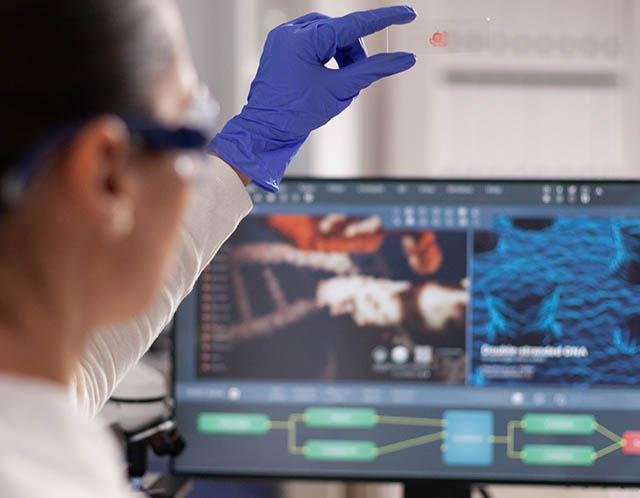
Regenerative Cell Therapy is a relatively young medical discipline. It is dedicated to promoting and strengthening the body’s own regenerative potential, aiming to stimulate the regeneration of cells and tissue a. o. in patients with tissue defects, musculoskeletal injuries and certain chronic disorders affecting the cardiovascular or immune systems. In the long run, regenerative cell therapies are considered to be changing the purpose of therapies more into the direction of curing than treating patients.
You likely have heard about ethical and political discussions on cell therapies – however, these were mainly referring to embryonal stem cells. Also, stem cells from bone marrow are widely known in the fight against blood cancer (leukaemias for example).
Adipose-Derived Regenerative Cell Therapy (ADRC), using the cells from the body’s own fat tissue has come into focus in past years: it is easy to access, it has no signs of rejection, and the derived cells have amazing skills to promote the body’s own ability to repair and regenerate.
Fat, described in medical terms as adipose tissue, was known to store energy and fat-soluble vitamins – however, it is as well one of the body's richest and most accessible sources of regenerative cells. Regenerative cells derived from adipose tissue (ADRCs) are a soup of cell types consisting of e.g. mesenchymal (adult) stem cells, vascular endothelial cells, and vascular smooth muscle cells, that can help to create new blood vessels among the grafts.
Orthopaedic surgeons are increasingly using adipose-derived cells as a resource in the treatment of osteoarthritis and related conditions. Same as reconstructive and aesthetic surgeons, who apply regenerative cell therapy meanwhile quite commonly in their clinical practice.
However, there are huge differences in the systems in use and the results achieved.
Traditional fat harvesting and grafting are known to damage delicate cells due to the mechanical procedures used. Processing and isolation of ADRCs from adipose requires profound, special methodology, extensive practical laboratory and clinical experience.
The Cytori Celution® System, with more than a decade of clinical experience, has proven to be a successful clinical cell therapy for reconstructive, aesthetic and orthopaedic conditions.
Other than the mechanically processed adipose tissue (also known as micronized or nano fat) the enzymatic process with the Celution® System supports a minimally invasive and tissue-saving procedure: Careful harvesting of own ADRCs and purifying them to an essence – which is upon re-injected into the target tissue in a concentrated way, provoking the own body’s ability to regenerate and heal damaged or impaired tissue.
The enzymatic isolation process ensures efficient, gentle and reproducible separation of nucleated cells from adipose tissue.
As important as the technology are the specialists around, running the entire process!
The fat harvesting is carefully performed by a highly skilled and experienced physician, “feeding” and observing as well the Celution® System, which purifies the cells in the described way, using specific enzymes. The precious essence is carefully injected locally into the damaged or to be repaired tissue (like into the arthrosis-damaged joints, or other damaged tissue areas) or for the purpose of aesthetic skin and tissue regeneration. This requires the skills and experience of an expert in his/her field! It may benefit certain procedures if part of the purified cells is also systemically applied.
The procedure is minimally invasive, and performed in OR setting. Harvesting, purification, and application - all done in one session and at the point of care - takes 2-3 hours in total. Usually performed in light general anaesthesia.
Outcomes on the viability of nucleated cells, and thus regenerative treatment results, have shown to be far superior to comparable devices or traditional fat grafting procedures. It stands for more predictable outcomes, delivering longer and maximum effect, improving the treated tissue and texture of the skin.
Apart from the already applied procedures in orthopaedics, reconstruction and aesthetic medicine, international studies show as well promising results in other medical treatment fields like systemic scleroderma, heart diseases, andrology diseases, fistulas and chronic wounds.
The ADRC-Therapy is available in selected medical centres only. Contact us for more information.
